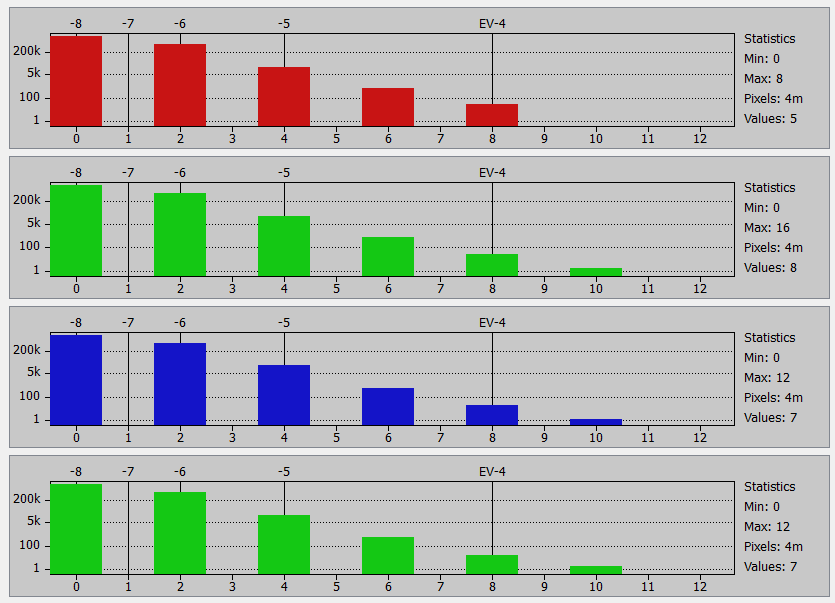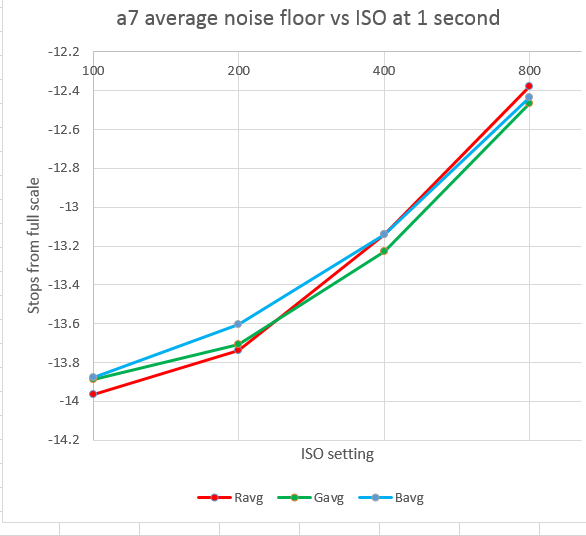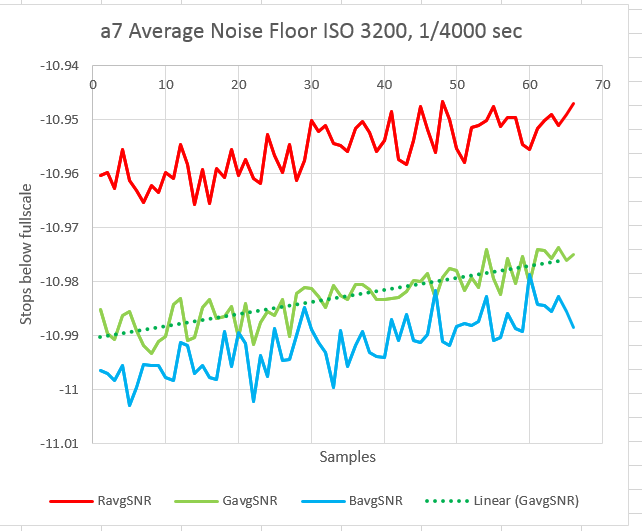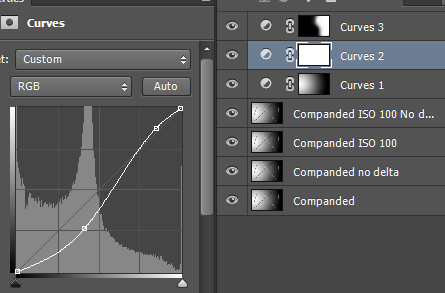All of the histograms in the preceding post were made with the drive mode in single shot. When you put it in continuous, you get something different: ISO 100: ISO 200: ISO 400: In each case, only every fourth bucket has data. The pattern is the same at other shutter speeds and ISOs. In single… [Read More]
Archives for 2014
Sony a7 noise floor
Here’s the average value of the standard deviation of noise floor in the central 90% of the image vs ISO at 1/30th second: If the amplifiers and the analog to digital converters in the a7 were perfect, and all the read noise came from the sensor array itself, then the read noise would double every… [Read More]
Testing the Sony a7, part 1
Well, it’s not really part 1, since I did some shutter shock testing earlier. But now I know that the camera’s vibration is no problem, I’ll give it my regular testing regime. [Added later: If you’re interested in the a7 noise floor in single shot mode, look here. If you care that the a7 becomes… [Read More]
Can you see the Sony raw compression artifacts?
In the previous few days’ posts, I’ve established that: The Sony raw compression algorithm generates artifacts that can be made visible by subtracting an uncompressed image chosen to stress the algorithm from one that has been compressed and decompressed and subjecting the result to amplification by a factor of 20 or 30. If the delta… [Read More]
Speculating on Sony’s raw compression
Hans van Driest has posted a possible explanation of why Sony uses the tone compression algorithm that it does. It’s speculation, to be sure, but, if true, might explain a lot. Here is is post, lightly edited for clarity. Sony uses column conversion, meaning they use a lot of ADCs in parallel. This, in combination… [Read More]
- « Previous Page
- 1
- …
- 51
- 52
- 53
- 54
- 55
- …
- 62
- Next Page »



